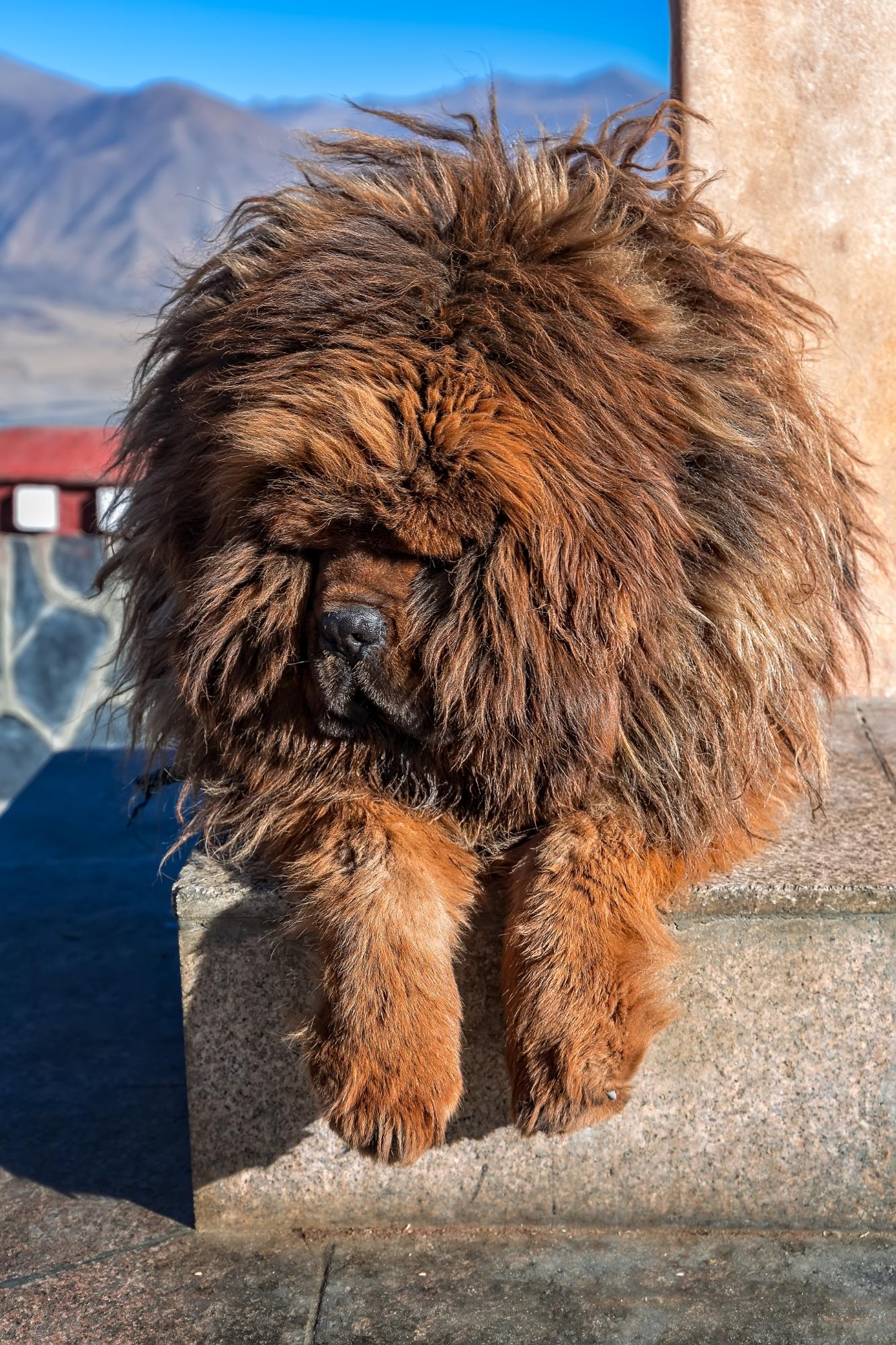TIBETAN MASTIFF
| Group: | Working Group |
|---|---|
| Size: | Giant |
| Temperament: | Independent, Intelligent and Guarded |
| Height: | 26-28 inches (male), 24-26 inches (female) |
| Weight: | 45-75 Kg (male), 35-55 Kg (female) |
| Life Expectancy: | Over 10 years |
| Origin: | Tibet |
| Coat Length: | Medium |
| Coat Type: | Double |
| Color: | Black Black & Tan Brown Red Gold Brown &Tan Blue Gray Red Gold Sable Blue Gray & Tan |
About
The Tibetan Mastiff has a long history of protecting livestock in the Himalayas .These thick-coated giants are friendly and relaxed about the house, lovingly loyal to their family, yet distant and protective of their territory towards outsiders. They are surprisingly agile and nimble on their feet when confronting a perceived threat. The wide head portrays an eminently dignified and astute attitude thanks to its high-set, V-shaped ears and expressive dark eyes.
Nutrition
Given that TMs are more physically primitive than other dog breeds, we think it's ideal for these dogs to consume a diet high in raw/fresh foods, such as lean meats, fresh vegetables and fruits, eggs, fish, and other natural things. Minerals and vitamins are also necessary for bone, skin, and coat health. As adults, Tibetan Mastiffs may only need two to four cups of a high-quality meal each day, which is far less than would be expected for a dog their size. They only consume food when they are truly hungry, and TMs frequently skip meals entirely. There is no particular diet needed for Tibetan Mastiffs.At all times, clean, fresh water should be provided.
Ideal Meal Breakdown
Protein
30
Fat
20
Carbohydrates
42
Others
8
Exercise
Daily moderate exercise is required for Tibetan Mastiffs, but it does not have to take the form of a scheduled activity. TMs favour structured play activities like chasing a flying disc or playing fetch over play-related activities like patrolling their territory. In cooler temperatures, they become more active. They frequently only engage in brief bursts of activity and tend to save their energy until they are absolutely necessary.
Grooming
The double-coated Tibetan Mastiff has a thick, woolly undercoat and coarse guard hair. Their low-maintenance coat only needs occasional grooming throughout most of the year. The undercoat of TMs "blows" once a year in a massive shedding that occurs in the late spring or summer. Use a de-shedding tool or undercoat rake at this time if possible.
Training
Traditional obedience training does not yield positive results with Tibetan Mastiffs. They are extremely intelligent, pick things up quickly, and don't need to be reminded of things they already know. They will comply with their owners' requests because they respect and trust their discretion, but if there is ever a doubt, the TM will rely more on his gut than on training. The breed is typically not food-driven, and training with treats does not consistently get the desired results. They are also infamous for giving flawless performances in class while completely disobeying all orders when they return home. They are unreliable in their recall, so you should never let them off the leash.
Health
Tibetan Mastiffs are often considered a robust breed, but even they can suffer from health problems, as is the case with any other breed. Keep in mind that hip and elbow dysplasia, a genetic condition that can result in arthritis and mobility problems, is a significant issue among Tibetan Mastiffs. Bloat, a severe and fatal condition in which the stomach twists and cuts off blood supply, is also a danger. Furthermore, these dogs are prone to eye issues such as progressive retinal atrophy and cataracts. To maintain your Tibetan Mastiff's overall health and wellbeing, it's your responsibility to ensure they receive regular veterinary checkups, a nutritious diet, and plenty of exercise. Lastly, because of their thick coats, regular grooming is necessary to prevent skin issues and matting.
History
With a history extending back more than 2,000 years to Tibet, the Tibetan Mastiff is a rare breed of canine. These dogs were prized by nomadic tribes for their power, bravery, and devotion since they were bred to defend families and livestock from predators. They were frequently presented as presents to aristocracy and employed in monasteries as watchdogs. When British explorers brought them back to England in the 1800s, the Tibetan Mastiff became well-known all over the world. They were displayed in dog exhibitions and rapidly became a prestige symbol among the rich. The Chinese conquest of Tibet in the middle of the 20th century threatened the extinction of the Tibetan Mastiff. Thankfully, a few were sent to the West, saving the species from extinction. The Tibetan Mastiff maintains its devotion to its family and remains a dedicated and faithful guardian despite their recent surge in popularity. They have become a lasting emblem of bravery and fortitude due to their remarkable traits and rich history.
